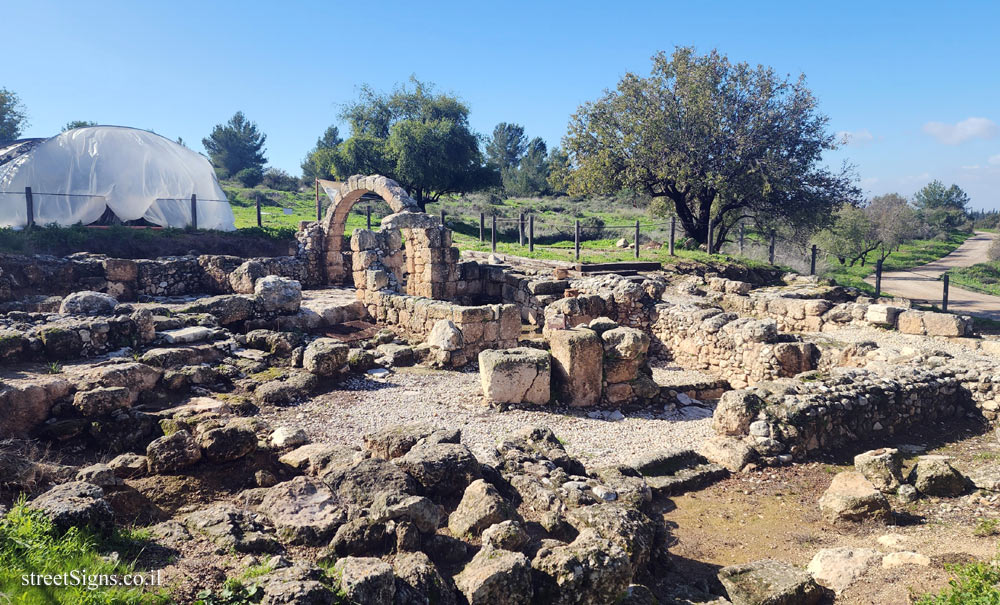Neot Kedumim Park is a park that tries to restore the vegetation that existed in the Bible period
The site map, with the letters and numbers indicating places mentioned on the sign was taken on the same day by the same photographer
 Click for a larger image
Click for a larger image The area with the remains of the buildings was photographed on the same day by the same photographer
 Click for a larger image Translation of the text on the sign
Click for a larger image Translation of the text on the sign:
[The English text appearing on the sign is illegible, therefore the translation of the Hebrew text is attached]
Village Living Complex In this area, a part of a settlement dating back to the days of the Second Temple and the Bar Kochba revolt (Roman period - 1st century BC, 2nd AD) was discovered when a Jewish population lived there. Through the Byzantine period (4th-6th centuries AD) when Christian residents lived there and up to the early Islamic period (4th-9th centuries AD).
The remains include an alley (8), houses (5,6), a courtyard (1) water cisterns (2), a purification basin (4), cooking ovens (7) and entrances to underground hiding systems (A) an apparently silent testimony but full of signs of life
After the destruction of the Second Temple, hard times befell the Jewish settlement, and this is evidenced by the concealment systems (A) as mentioned "They (the Jews) took the convenient places of the land and strengthened them with shelters...so that they could move secretly...under the surface of the ground" (Dio Cassius)
The Christian monks in the Byzantine period made repairs to the buildings, added arches and turned the building into a roadhouse providing services to immigrants to Jerusalem.
A few Islamic coins and pottery from the maker’s house in Ramla found there constitute the last phase of the ancient settlement.
As Ecclesiastes says, "A generation goes and a generation comes, and the land has stood forever" (1:4)
Learn about:

 Click for a larger image
Click for a larger image  Click for a larger image
Click for a larger image